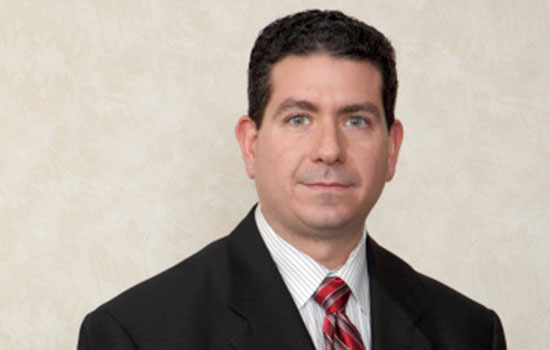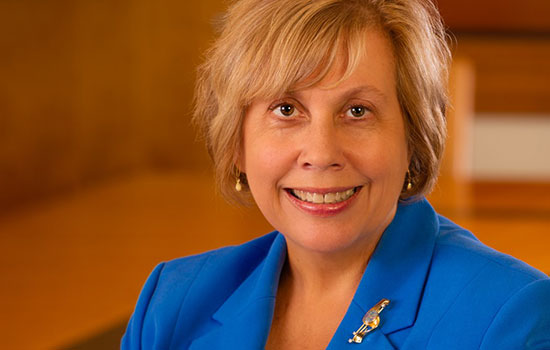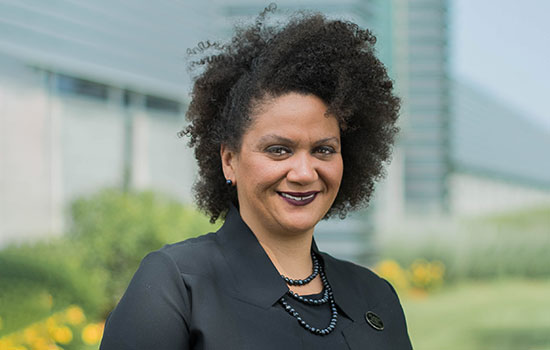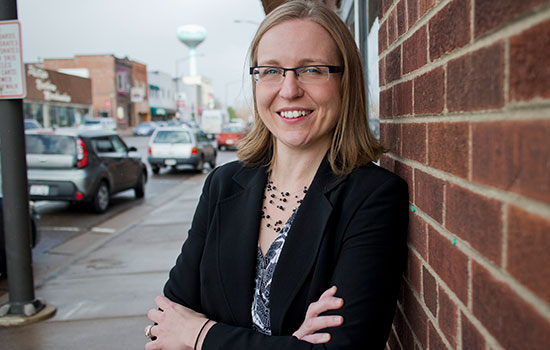
Law firms of all sizes across the state continue to adapt their practice areas and business models around the changing legal landscape. A better economy means an increase in transactional cases for some firms, and for others it means competing against the rise of boutique law firms and alternative service providers.
Attorneys must also adapt to the effects of changes to Wisconsin Supreme Court Rules, especially those that allow attorneys to enter into new roles. Licensed attorneys will continue to compete against the rise of online platforms that allow laypersons, for example, to create their own elder law and estate plans.
The critical success factor for firms will be their ability to effectively communicate with clients. Clients continue to become more sophisticated and demand that lawyers maintain streamlined communications, enact cost-effective billing structures and practice management systems, and demonstrate the value of hiring an attorney versus handling matters on their own. This year promises to bring new challenges and opportunities for attorneys.
We talked to three lawyers and a law firm administrator to get a bead on what they’re experiencing in their firms.
Transactional Cases on the Rise
“In the last year to 18 months, we’ve been handling a growing number of cases involving commercial real estate transactions involving Spanish-speaking clients. It’s wonderful to see increased investments from that community,” says Piermario Bertolotto, J.D., M.B.A., born and raised in San Juan, Puerto Rico, senior attorney and vice president of Rizzo & Diersen S.C., in Kenosha.
 Christopher C. Shattuck, Univ. of La Verne College of Law 2009, M.B.A. U.W.-Oshkosh 2015, is manager of Practice411™, the State Bar’s law practice assistance program. If you have questions about the business aspects of your practice, call (800) 957-4670.
Christopher C. Shattuck, Univ. of La Verne College of Law 2009, M.B.A. U.W.-Oshkosh 2015, is manager of Practice411™, the State Bar’s law practice assistance program. If you have questions about the business aspects of your practice, call (800) 957-4670.
Bertolotto credits the increasing number of commercial real estate transactions to investments by large corporations, such as Uline, Amazon, and Foxconn in real estate and facilities in Kenosha and Racine counties. “The increased investments and corresponding transactions correlate with increased disputes and litigation.”
“The entrepreneurial mindset to open businesses and lease or buy real estate also leads to individuals forming new business entities. So we’ve really seen an increase in the number of cases we handle that revolve around all aspects of starting a new business, obtaining property to operate that business, and then disputes involving the different parties throughout the entire process,” says Bertolotto.
Another effect of the better economy has been a reduction in the number of simple Chapter 7 bankruptcies and an increase in the number of Chapter 13 bankruptcies. According to the U.S. Bankruptcy Court – Eastern District of Wisconsin’s Bankruptcy Statistics,1 Chapter 7 bankruptcy filings were down an average of 8 percent in October–December 2019 as compared to filings from the same months in 2017, whereas Chapter 13 bankruptcy filings increased an average of 8 percent during the same timeframes.
“The better economy has caused less of a need for clients to file a Chapter 7 bankruptcy to liquidate assets and remove debts and an increased need for clients who have the ability to pay back their debts over an extended period of time to seek relief under Chapter 13 of the bankruptcy code,” says Bertolotto. “It’s important to explain matters in plain terms to clients, especially for complicated cases. Navigating legal matters is difficult enough, especially if there is a language barrier.”

We’ve really seen an increase in the number of cases we handle that revolve around all aspects of starting a new business, obtaining property to operate that business, and then disputes involving the different parties throughout the entire process. – Piermario Bertolotto, Kenosha
The Battle for Talent Continues
How do large firms compete against the rise of boutique law firms?
“Large firms should identify opportunities for growth that combine the needs of their clients and prospective clients with the talents and abilities of their firm’s members. They should also make sure they have the correct infrastructure to handle additional capacity,” says Lori Kannenberg Dorn, MBA, CLM director of administration with Stafford Rosenbaum LLP, Madison and Milwaukee, and chair of the State Bar of Wisconsin’s Law Office Management Assistance Program Advisory Committee.
Tell Us!
What changes in your practice area are you anticipating in the coming year? Post a comment at the end of this article or email the editors at wislawmag@wisbar.org.
Firms also should emphasize effectively communicating with clients. “It boils down to constantly thinking about your client’s experience and making sure that you have effective communications with them. Are you having conversations about what they need and expect? Are you meeting those needs and expectations? Attorneys who listen to their clients [and] then meet or exceed expectations will keep those clients instead of losing them to boutique firms that are entering the market,” says Dorn.
Leveraging technology to keep overhead costs low is another key performance indicator for large firms. “We transitioned to a paperless practice and automated several of our tasks. Going paperless increased the efficiencies of both our attorneys and support staff. Documents are easier to find, workflows were shortened and streamlined, and more staff time is being devoted to billable versus nonbillable tasks,” says Dorn.
How do large firms continue to attract new talent to replace those attorneys who are looking forward to retirement?
“Many attorneys are starting to plan for their retirements, which creates great opportunities for the next generation of attorneys coming into practice. New attorneys have the opportunity to work with seasoned attorneys and inherit practices,” says Dorn. “But the war [for] talent continues. It’s challenging to attract and retain top talent because of the low unemployment rate and the increasing number of opportunities for attorneys and law firm staff. That’s why law firms need to do a great job of creating a work culture that is appealing to all generations, so that people want to come to work for your firm and stay,” says Dorn.
Investments in diversity and inclusion opportunities are necessary for firms to create a positive work culture that is welcoming to everyone. “We participate in the State Bar of Wisconsin’s Diversity Clerkship Program. We’ve met talented and upcoming attorneys through the program, and we are hoping that our continued partnerships with the law schools in Wisconsin will give us a competitive advantage to attracting and retaining top talent,” says Dorn.

It’s challenging to attract and retain top talent because of the low unemployment rate and the increasing number of opportunities for attorneys and law firm staff. That’s why law firms need to do a great job of creating a work culture that is appealing to all generations. – Lori Kannenberg Dorn, Madison and Milwaukee
Lawyer-Mediators a New Option in Family Cases
For Natasha Torry, owner and sole practitioner of RootedLaw LLC in Sheboygan2, an amendment to SCR 20:2.4 has resulted in a change in approach to family law cases. “For a long time, parties to a divorce felt that they either had to choose to hire an attorney to litigate against their divorcing spouse or complete the divorce process pro se. After the rule change in 2017, clients were given a new option. Instead of potentially ending up in court several times throughout the divorce process or having pro se documents filled out incorrectly or incompletely, which can lead to problems for years down the road, divorcing couples can choose to work with a lawyer-mediator. That gives the divorcing couple peace of mind that they have worked out an agreement with their former spouse that is in compliance with the law and one that they can live with.”
In 2016, the Director of State Courts, on behalf of the Planning and Policy Advisory Committee, petitioned the Wisconsin Supreme Court to amend SCR 20:2.4 to allow lawyer-mediators to draft settlement documents in family cases.3 On Feb. 21, 2017, the supreme court issued a final order amending SCR 20:2.4, establishing “that a lawyer may act as a third party neutral, rather than as a lawyer for the parties in a divorce action and in that role may both facilitate the clients reaching an agreement and prepare the settlement agreements.”4
The amendments require the lawyer-mediator to do all the following:
-
refrain from giving legal advice. Inform the clients of the advisability of seeking independent legal advice.
-
make clear that as a mediator, the lawyer is not representing either party nor providing legal advice or advocacy to any client.
-
not appear in court on behalf of either or both of the parties.
-
make clear to unrepresented parties that the lawyer-mediator does not provide legal advice to either party and that it is desirable to have legal advice in divorce matters.
-
avoid any suggestion that the lawyer may represent both parties or is acting as a lawyer for both parties in a divorce action.5
Attorneys acting as a lawyer-mediator in family law cases need to ensure both parties understand the role of a lawyer-mediator. Torry says, “How the process typically works is that I receive a call from a potential client indicating that they and their partner have made the decision to get a divorce. If the potential client is not calling specifically for a lawyer-mediator, I inform them of that option. If the calling spouse elects to go down that path, then I have a follow-up conversation with the other spouse to make sure that they are aware of the inquiry and willing to meet, before scheduling an appointment with both spouses to discuss the mediation process.”
“When the couple comes into the office for the initial meeting, I take great care in explaining what my role as a lawyer-mediator would be in a family law case. I also provide a detailed packet of information regarding the divorce process in Wisconsin and explain, again, that the mediated-divorce process is one of their options. The couple is then asked if they want to proceed with the lawyer-mediator option, and if they do, we have subsequent meetings and I file the necessary pleadings and documents as the mediation process proceeds,” says Torry.
“I’d encourage others to consider being a lawyer-mediator in family law cases. If we can convert more pro se people to mediation, that may be much more fulfilling than the litigation of family restructuring. Being a lawyer-mediator brings me more satisfaction than the traditional adversarial lawyer role in contested family law cases,” Torry says. “Attorneys considering exploring this type of work should make sure they understand the rules regarding the role of a lawyer-mediator in family cases and take appropriate training to serve as a mediator.”

I’d encourage others to consider being a lawyer-mediator in family law cases. If we can convert more pro se people to mediation, that may be much more fulfilling than the litigation of family restructuring. – Natasha Torry, Sheboygan
Issues Overlap in Estate Planning & Elder Law
Estate planning and elder law matters have different goals but common overlapping issues. “For estate planning, we look at how things will be handled upon the death of a client and the powers of attorney that would authorize individuals to act on the client’s behalf while or if the client becomes incapacitated. In elder law cases, we focus on asset preservation during a client’s lifetime in the event the client would need long-term care at assisted-living or nursing facilities,” says Kristi L. Speer, a sole practitioner at Speer Law Office LLC, Phillips.
The estate planning and elder law arenas have been experiencing an increasing number of laypersons creating their own planning documents. “We’ve seen an increase in the amount of people who feel they can do their own elder law or estate planning using online forms,” says Speer. “In elder law cases, clients who do not properly plan for additional sources of assets or income might experience a loss in governmental benefits due to their resources exceeding their limits. In estate planning cases, we see common issues [including] failing to execute the will properly, not having correct witnesses or notices, and failing to recognize the impacts of a second marriage.”
“For second marriages, that is, people who have been previously divorced and married a new spouse, laypeople with children from a previous marriage incorrectly assume that if they die without a will their surviving spouse in the second marriage would receive 100 percent of their assets. However, according to the basic rules for intestate succession found in Wis. Stat. section 852.01, the dying spouse’s assets would be split 50 percent [for] the surviving spouse from the second marriage and 50 percent [for] the children from the previous marriage,” says Speer.
“Online users of forms for elder law or estate planning can sometimes get trapped into a false sense of certainty and unfortunate cycle of events. Failing to properly execute a will may lead to its invalidity, not checking one box on a healthcare power of attorney form could lead to unnecessary guardianship proceedings, and receiving additional assets or income could actually cost the recipient more in lost benefits. That’s why hiring an attorney to properly plan for all the contingencies in elder law and estate planning cases is an added value to laypersons trying to do those forms online without the necessary legal knowledge,” says Speer. “Without that assistance, laypersons could be caught in a legal cycle that does not protect their assets or have those assets go to people that were not intended to be beneficiaries.”
Another factor leading to the increase in use of online forms in rural Wisconsin is the lack of attorneys. According to 2014 membership statistics, 15 attorneys practiced in Price County.6 Today, that figure is only 17, with 64 percent of the attorneys being age 50 or older.7 An aging attorney population and lack of younger attorneys practicing in rural areas is not unique to Price County, as other counties, such as Buffalo, Jackson, Pepin, Trempealeau, Crawford, and Grant, face the same issue with 70 percent of the attorneys practicing in those counties being age 50 or older.8
“Having a small number of attorneys in a community creates situations where firms have conflicts of interest. Clients are then forced to use attorneys outside of their communities and that can lead to uneasiness in dealing with unfamiliar firms, and perhaps also an increase in the fees charged to clients,” says Speer. “We could definitely benefit from having more attorneys in our community, and tremendous opportunities await those attorneys who move to rural areas, like Price County.”

We’ve seen an increase in the amount of people who feel they can do their own elder law or estate planning using online forms. – Kristi L. Speer, Phillips
Building a Better Client Experience
According to Clio’s 2019 Legal Trends Report,9 “growing firms know how to bring in more business while also increasing the capacity of their lawyers to do more work and collect more revenue for every case and client they bring in. Firms that are too busy to respond or to take the time to deliver quality communications may also be suffering from a lack of efficient processes that allow for this type of focus.”
When Emil Ovbiagele, J.D., M.B.A., founder and managing attorney of OVB Law & Consulting S.C., Milwaukee, and board member of the State Bar of Wisconsin’s Young Lawyers Division and Milwaukee Bar Association, created his law firm a few years ago, he prioritized the client experience in his firm’s mission statement. “Our mission is to positively redefine the way clients use and view legal services. Every decision we make comes down to asking whether the investment or strategy will improve our client-centered mission.”
“In order to deliver on our mission for our clients, we’ve invested in practice management systems,” says Ovbiagele. “One of the things we noticed is that clients hate being surprised by large invoices for legal services. They do not mind paying for the work that you are doing on their behalf, but they do not want to be surprised.”
“Therefore, for each matter, we sit down with the client and explain how their case could fall into different complexity tiers based on our prior experience with similar matters. After the case is concluded, we review our estimates and then modify our tiers, as necessary. We also provide our clients with flat fees, agreeable caps for hourly projects and representations, and monthly law-related representation agreements,” says Ovbiagele. “This allows our firm to make sure clients have the best experience possible and that our work reflects the fair value of our legal services.”
How does your firm obtain new clients? “Instead of investing in expensive pay-per-click or online advertising, we focus on building relationships with centers of influence,” says Ovbiagele. “We cultivate relationships with community bankers, accountants, and financial advisers. Those type of professionals are most likely to work with the type of potential clients our firm typically represents. Each referral is tracked in our client relationship management system, and this deliberate and strategic networking model has been working quite well for us.”

Our mission is to positively redefine the way clients use and view legal services. Every decision we make comes down to asking whether the investment or strategy will improve our client-centered mission. – Emil Ovbiagele, Milwaukee
Conclusion
No matter how many years of practice you have or how large your firm is, you can take steps to take on new practice areas or increase efficiencies in your law firm’s operations. The tips not only provide a roadmap but also illustrate that legal professionals can successfully tackle challenges of the changing legal landscape. Want to get started?
An easy first step is to join the Practice411™ electronic list, which is open to all State Bar of Wisconsin members as well as IT professionals, office administrators, approved staff members, and members of partner organizations, such as WALA (the Wisconsin chapter of the Association of Legal Administrators). To join, visit www.wisbar.org/Practice411elist.
If you would like to interact more with your colleagues, consider joining a section, attending a local bar meeting, or reaching out to the State Bar for confidential consultations on practice management, ethics, and lawyer wellness issues. Check out additional programs such as the State Bar of Wisconsin’s Lawyer-to-Lawyer Directory10 or Ready.Set.Practice mentoring program.11 There are people all around Wisconsin who want to help you succeed in your practice. Make 2020 the year for you and your practice!
Endnotes
1 Available at www.wieb.uscourts.gov/bankruptcy-statistics.
2 Natasha Torry also serves as the municipal court judge for the city of Sheboygan-village of Kohler. The quoted opinions provided by Torry are the author’s alone and do not reflect the views of the city of Sheboygan-village of Kohler.
3 See 16-04 Petition Archive; Joe Forward, Court Approved: Family Law Mediators Can Draft Settlement Documents, InsideTrack (Jan. 18, 2017).
4 See Revised Wisconsin Ethics Opinion E-84-3: Representing both Spouses in a Divorce (June 2019).
5 Id.
6 Dianne Molvig, The Road to Rural Practice, Wis. Law. (Oct. 2014).
7 State Bar of Wisconsin membership records, Jan. 2, 2020.
8 Christopher E. Rogers, Now Playing in Your Neighborhood: State Bar Outreach and Services, Wis. Law. (Nov. 2018).
9 Available at www.clio.com/resources/legal-trends/2019-report/read-online/.
10 Lawyer-to-Lawyer Directory: Where Nearly 400 Lawyers Have Your Back, InsideTrack (Jan. 17, 2018).
11 Need a Mentor? Want to Mentor? Sign Up for State Bar’s Mentorship Program, InsideTrack (Nov. 9, 2018).
